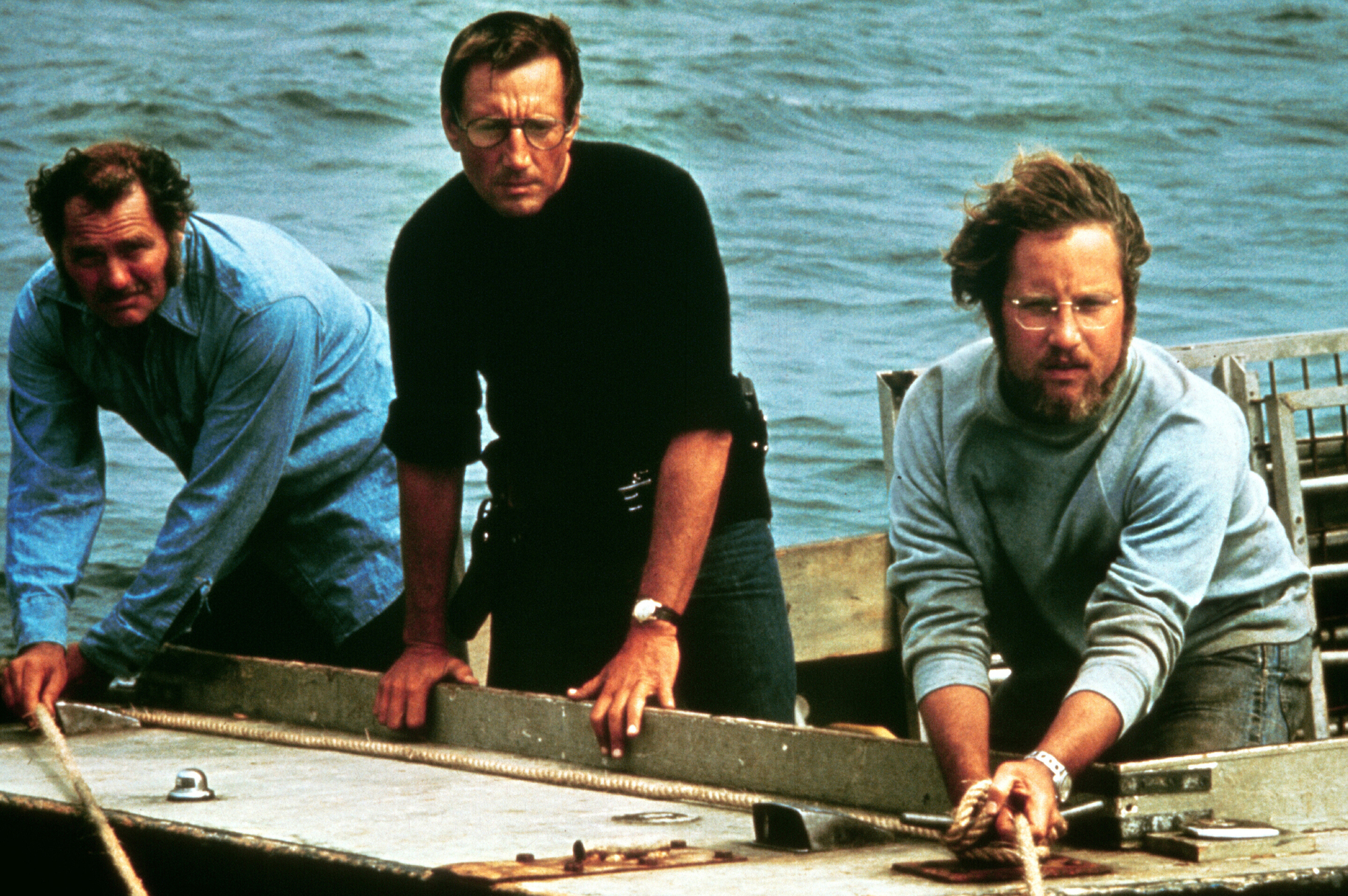Review: Jaws (1975)
Like the shark, Jaws is ruthlessly effective. This past June the 29th (the same day as the sinking of the USS Indianapolis that Quint recounts), my wife and I saw the new digital restoration at the TIFF Bell Lightbox. Mid-eighties babies, neither of us had seen the film on the big screen before. As the camera began to swim through the seaweed and John Williams’ famous notes sounded, there were a few giggles and knowing chuckles in the audience. However, as the drunken night swimming ended in agonized screaming and then the quiet lapping of waves, the audience hushed. We intently followed the incidents and small-town politics on Amity Island. We laughed at the jokes. Some people even screamed when Jaws’ head burst out of the water. My wife jumped out of her seat when the head of the corpse popped out—which has to be one of the best gotcha moments ever! As we walked out of the movie theatre into an unusually red summer evening, the two of us were glowing too—in that way only a really good summer movie can make you.
Why does Jaws still work? Why did it ever? The plot summary doesn’t sound very promising. A killer shark is terrorizing an island community. The local police chief—who is afraid of the water—must team up with a marine biologist and a crabby old sea dog to hunt the fish down and kill it. It sounds like a disposable thriller, yet Jaws is one of the great summer movies. It’s immensely entertaining and still thrilling. But Jaws isn’t great because it’s scary: it’s scary and great because it’s a good story.
Jaws works because every aspect comes together to create a thrilling and engaging film. The tight narrative structure, which follows Clouzot’s The Wages of Fear (1953) and is repeated in Spielberg’s Jurassic Park (1993), takes time to introduce the characters and set up the problem in the first half, before stretching the characters and solving the problem over the course of the tense, action-packed second half. And Jaws has plenty of the goods (thrills, action, suspense), but, unlike many blockbusters, it also has strong characters. The three leads, Roy Scheider as Police Chief Brody, Robert Shaw as Quint, and Richard Dreyfuss as Hooper, are all excellent, and it’s so much fun to see their different personalities conflict with each other. In the second half of the film, when the three characters set sail to hunt the great white shark, Jaws becomes an overt man-versus-nature tale in the American tradition of Moby Dick and The Old Man and the Sea. The film is proof that a summer blockbuster can be extremely entertaining and still be skillfully made and meaningful.
Jaws is a special Steven Spielberg movie. After all, this is the film that launched his career. While it bares Spielberg’s mark, it also reveals a young director learning and testing his craft. For instance, a number of early scenes feature Robert Altman-like overlapping dialogue. The young Spielberg is noticeably brash, showing a child devoured in an eruption of red in defiance of Hitchcock’s dictum that you can’t kill a kid. Most interesting to me, the children of Brody are not very important, and are used mostly to reveal aspects of Brody’s character and to generate suspense. Indeed, the film ends not with a family reunion, but rather with an understanding shared between the dissimilar men.
10 out of 10
Jaws (USA, 1975)
Directed by Steven Spielberg; screenplay by Peter Benchley and Carl Gottlieb based on the novel by Peter Benchley; starring Roy Scheider, Robert Shaw, and Richard Dreyfuss.
